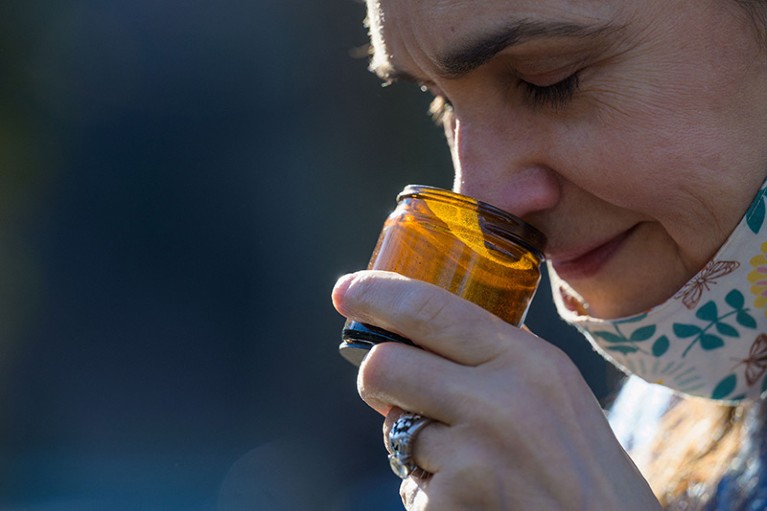Hello Nature readers, would you like to get this Briefing in your inbox free every day? Sign up here.
A new drug can alleviate loss of smell and taste caused by COVID-19.Credit: Angela Weiss/AFP via Getty
COVID drug helps bring back sense of smell
Clinical-trial data suggest that an antiviral pill called ensitrelvir is among the first treatments for COVID-19 that helps the sense of smell and taste return more quickly after infection. For now, ensitrelvir is available only in Japan (under the brand name Xocova) but it is under fast-track review in the United States. “When the Omicron variants became dominant, the loss of taste and smell started to become less and less common,” says infectious-disease specialist Amesh Adalja. “But it still occurs, and it is a distressing symptom.”
Nature | 2 min read
Reference: Shinogi press release
Element-discovering supergroup disbands
A US–Russian partnership that discovered the five heaviest elements is over because of Russia’s invasion of Ukraine. Yuri Oganessian — the only living person with an element, oganesson, named after him — confirmed that his laboratory in Russia can no longer collaborate with US teams because of sanctions. Instead, Lawrence Berkeley National Laboratory — where elements including berkelium were discovered — will pursue the first sighting of element 120 on its own.
Chemistry World | 5 min read
‘Dark photons’ hint at nature of dark matter
Indirect evidence of ‘dark photons’ has been spotted in the shrapnel of thousands of particle-smashing experiments. This could provide a glimpse into the mysterious nature of dark matter — which seems to make up most of the mass of the universe but is almost impossible to observe, other than by its gravitational effects. “The story is something like this: there could be an additional dark sector, where dark matter resides,” says particle physicist Carlos Wagner. Dark photons, if they exist, could weakly interact with normal matter, offering a window into the dark sector.
Physics World | 7 min read
Reference: Journal of High Energy Physics paper
Features & opinion
Hundreds of apple varieties once popular in the United States have disappeared.Credit: Leah Choi for Nature
Lost varieties could unlock better apples
Scientists in Colorado are resurrecting apple trees found in abandoned homesteads, overgrown fields and hidden canyons to revive obscure or forgotten varieties. Across the thousands of types of apple that humans have cultivated throughout history, there are a huge number of genetic mutations that influence flavour, colour, crispness and other characteristics. Scientists hope that these endangered apples’ genes could hold the recipe to unlock the next blockbuster fruit or make trees more resistant to disease, drought and extreme weather.
Nature | 12 min read
How to share data — equitably
Wealthy countries have long been extracting scientific data from poorer nations and pocketing the proceeds. A genetics project in Mexico is trying to change that by giving local researchers advanced access to the data and free computing services. It’s not a perfect solution, argues a Nature editorial, but one that more fields — including genetics, ecology, epidemiology and geology — could adopt.
Nature | 5 min read
Science is under threat in Argentina
The front runner in Argentina’s upcoming presidential elections says he wants to disband ministries and privatize research — a deeply concerning prospect that would be disastrous for the country, argues Argentine geologist Victor Ramos. Education and science are key to overcoming the country’s economic crisis, he writes. “Scientists in Argentina and beyond must shout louder and make their voices heard.”
Nature | 5 min read
Image of the day
The blood vessels in the placenta of a mouse with a normal microbiome (left, top and bottom) are more elaborate than those of a mouse without resident bacteria.Credit: Geoffrey N. Pronovost et al./Sci. Adv. (CC-BY 4.0)
The blood vessels in the placenta of a mouse with a normal microbiome (left, top and bottom) are more elaborate than those of a mouse without resident bacteria. The difference illustrates how the beneficial bacteria that live naturally in a mouse’s gut help pregnant females to form a healthy placenta to support the developing fetuses. (Nature Research Highlight, 1 min read, Nature paywall)
Reference: Science Advances paper
